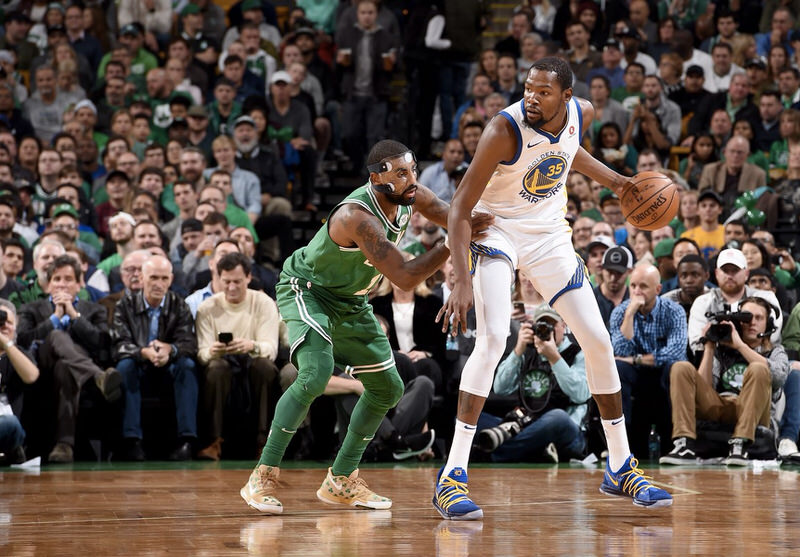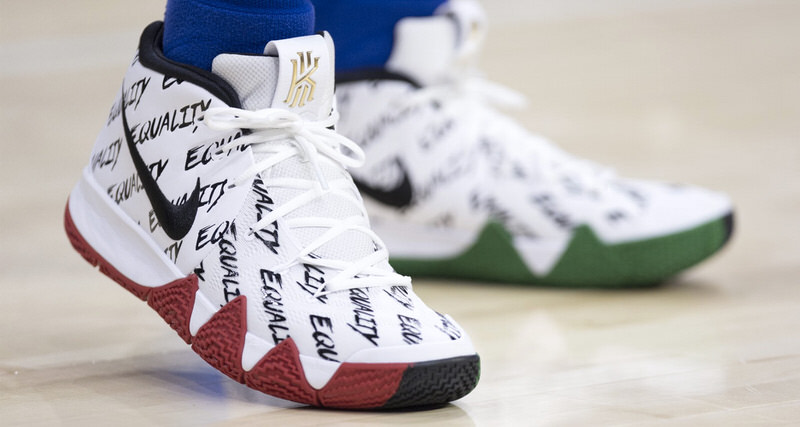This post may contain affiliate links. Please read our disclosure policy.
words & interview // Nick DePaula:
Over the weekend, NBA players around the league utilized the open canvases of their newest signature shoes and featured models to honor the legacy of Dr. Martin Luther King Jr. While the showcase of sneakers has become an annual tradition for a handful of seasons now, the league’s loosening up of its longtime uniform and color guidelines is still a more recent development that’s allowed for players to more openly express themselves.
To hear all about exactly how the league’s guidelines work, dating back to the lineage of laws over the past three decades of the Association, Nice Kicks caught up with Christopher Arena, the NBA’s VP of Identity, Outfitting & Equipment. Arena and his team help to oversee the look of the league, whether that includes the framing of uniforms under the new partnership with Nike, or how many “theme nights” are permitted for players for a given season. (There are 10 this season.) Over the past decade, that would also include the progressively relaxed view of the once-controversial “Dress Code,” as the arena arrival has become its own moment of sorts for all players thanks to social media.
Read ahead for an in-depth interview detailing all of the nuances of the league’s latest footwear and uniform policy rules, with an overview of insights straight from the top of a league that has constantly looked to celebrate the dynamic personalities of its players.
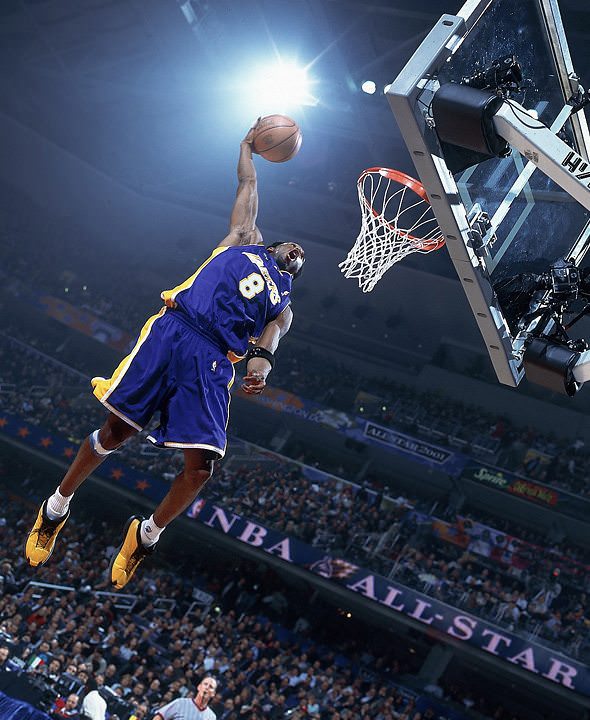
Nick DePaula: How has the League’s history of footwear color guidelines for players evolved through the years?
Christopher Arena: I started in 1994 in this position. Our group started looking at this stuff in the mid-90s. Back then, the rules were you had to have the majority of the shoe in black or white. 51% has always been the number that’s been thrown out. The basis of that was to create some form of team unity. As the years developed, around the early 2000s we integrated the color grey as one of the core colors. Black, white or grey. Not soon after that, we started to look at the All-Star Game as a vehicle where players could wear whatever colors might make sense. That might hook up with the All-Star uniform, which were red, white and blue back in the day, or other innovative colors that they might have on their plate.
As we saw that take off, we started to get into what we call our “event policy” for footwear. We have different events and platforms that the league goes through each season. We said, “Lets align these events with the colors of shoes.” For Halloween, you can wear orange shoes or orange and black. Somewhere around 2011 and 2012, we also had a breakthrough and said, “Instead of just black, white and grey, you can do any color that matches your team uniform, in any percentage that you want.”
The unity wasn’t necessarily that we were all 51% of one color, the unity is that the players are all matching their team identity. With the Knicks, for example, you might have one player in predominantly orange, one in blue, one in white and one in a combination of blue, orange and white – but it all hooks to the uniform. There’s unity in color.
We started to see more innovation from the footwear companies in terms of how they’re applying the colors to match up with the uniforms. Also, the team can still have their own policy, above and beyond our policy. Or the players may institute their own rule and all wear the same color, whether that’s because of a superstition or whatever else.
The only other wrinkle to that, is more recently, we’ve expanded the event footwear to say, “Listen, we’re not going to be the judge or jury on what designates a Halloween shoe.” Meaning, I don’t know that Halloween is just black or orange. Zombies, spiders and ghosts are related to Halloween, and all of those things aren’t necessarily orange. We cast a big net over that and said, “Go have some fun with the theme for Halloween.” We still have the artwork sent through to our group to review them. We still have to make sure that there are no sharp protruding objects or reflective elements. Safety is still the number one priority for our players. Beyond that, just making sure that the colors work within our guidelines.
NDP: What’s the lead time that somebody would need to submit a shoe in order to wear it?
CA: We’ll review shoes by early August for the first half of the season, which is prior to All-Star Weekend. Then, by early December for the second half of the season. That being said, we understand the footwear industry and a lot of these shoes are pre-built far in advance, but oftentimes there might be some shoes that come up as a one-off, and we’re certainly open to take those and review them accordingly. The footwear companies are all very compliant and understand the rules. They work with us and some are partners of ours, and some are on the periphery. They all get it and understand, and they welcome the freedom that we’ve been able to institute along the way.
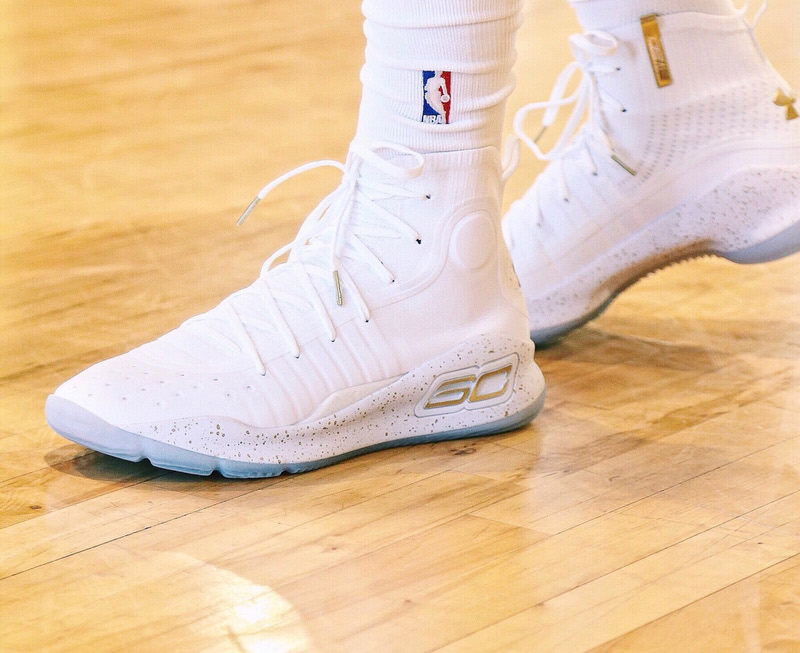
NDP: For past seasons, there were as many as 18 theme nights for players. How many are there this year?
CA: For preseason and international games, we allow any color combination. Complete freedom, and it’s almost like it’s an All-Star Game. Early in the pre-season, the equipment manager may be carrying twenty or twenty-one players, and for him to have to coordinate all those pairs is tough. It’s easier on the equipment managers if they have to account for twenty players. We also have what we call “TRB,” which is our “Trophy / Ring / Banner” night. On opening night, when you’re raising your banner, that defending champion team can wear gold within their shoe, in addition to the colors of their team. Hoops For Troops is typically a week long in November. Christmas Day, you can wear any color combination.
Halloween and MLK Day are days, but I look at it as a school analogy. If Halloween is on a Thursday, the 2nd graders are probably doing activities around that in the couple days leading up. If you have a home game leading up to Halloween, you can certainly wear that festive shoe. It’s not specifically just on that day. It’s the same thing for MLK Day, and you can wear those shoes for MLK Weekend from Thursday through Monday as a tribute. Chinese New Year fluctuates depending on the Lunar Calendar. Black History Month is the month of February. Obviously, we have the All-Star Break. Noches NBA is the first week of March, and then the NBA Finals. All of those are “any color combination” themes, and then TRB and the Finals are gold. We had [gold and red “Awards Week” for the] Grammys and Oscars in the month of February, but we wanted to elevate Black History Month over those instead.
NDP: This year, there’s of course been a big shift with the uniforms shifting from Adidas to Nike. How do you think that’s impacted the look of the league and how things have changed?
CA: I think the best is yet to come. I’m sure you’ve seen all of the City Edition uniforms that were recently revealed, and that opens the palette up in a dramatic way for some teams. It’s allowed the footwear manufacturers the ability to tie into those and I think the players love it. These guys are fans of footwear and they grew up in an era where going to Foot Locker, Foot Action and Champs and buying shoes at the mall was the thing, to play in and to wear. They’re well in tune to footwear culture, and they appreciate that now they have an opportunity to be the trendsetters.
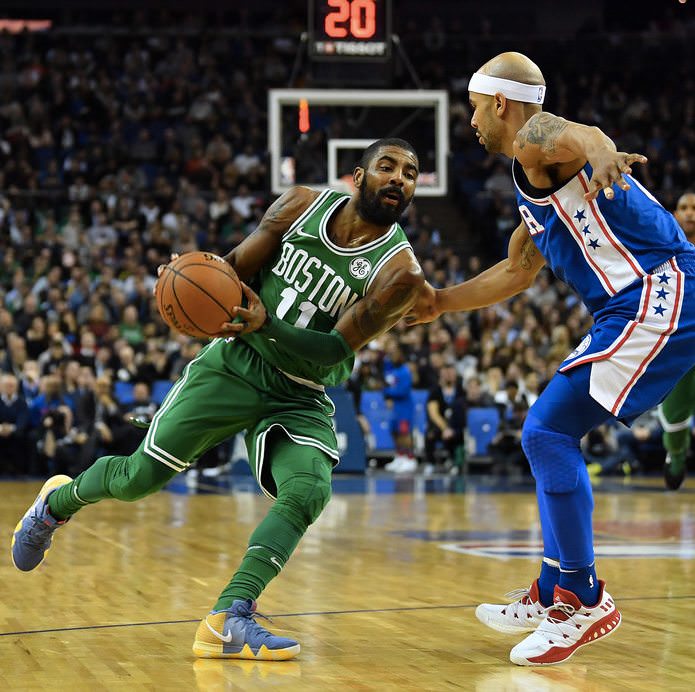
NDP: A big thing this season is how each team has four jerseys, but you loosened things up to allow the teams to be at the discretion of deciding which one will be designated as their home jersey. How big of a debate was that, to allow teams to move away from the traditional home white jerseys if they wanted to have a full color instead?
CA: It was interesting, and as we were having early discussions with Nike, they were working on outfitting us this season for quite some time. One of the key elements is our equipment managers. They’re really the rock behind everything that you see when it comes to outfitting. As we started talking to them, we realized we had teams over the last decade or so that would request to wear a different jersey at home, whether it was because they were running a promotion, or it was Valentines Day and they wanted to wear red.
As we looked back and did some calculations, we found that almost 20% of our games featured the home team wearing a road color. We started doing some fan research, and we asked, “Do you know if there’s a rule that teams wear white at home, and does it matter?” There was a lot of ambivalence. Nobody really thought, “Yes, it’s tradition. You should do it!” It was more common that they didn’t know that teams wore colors at home sometimes, and there wasn’t really a passionate feeling towards having white at home.
We fell on this idea that, “We’re already doing it 20% of the time, and the teams who embrace it, love it.” They can do an all-arena out of the color, different promotions and do a theme day, night or week. The Spurs do “Silver Saturdays” where they wear their grey uniforms at home. It allowed our marketing folks to really market, promote and extend their brand in a really unique way. While, if a team wanted to have white at home, because they felt there was some tradition there, they can do that as well.
The minute we removed those parameters of home white and road color, we then looked into renaming the jerseys. We came up with Association edition, which are the white jerseys because every team has one as part of the Association. Icon is the preeminent color that the team is connected with. Statement is the alter ego, and a little bit different alternate color. The City edition embraces the culture of the city, or indigenous elements in and around the team. The [throwback] Classic edition, which we never want to forget, because some teams are celebrating some great anniversaries.
It was well thought out, a lot of research and a lot of help from our equipment managers. A lot of strain is going to be on them, because now they have to bring even more multiple uniforms on the road. Ultimately, the worst case is you bring two, so you have a dark and a light no matter where you’re going. Often times, your dark may contrast with the other team’s dark. When we had the 76ers / Celtics game in London the other day, you had blue versus green. It was certainly festive and colorful, and both teams were in their preeminent iconic color, which is what the fans were excited to see.
NDP: It’s been a cool shift for sure. A lot of teams have been spicing things up, whether that’s the Timberwolves with their volt alternate, or of course Utah with their City edition, which is giving players more options to try new colors. Something else this season that we’ve seen pick up is all of the custom shoes that guys have been wearing. What are some of the guidelines for hand-painted shoes that are on court?
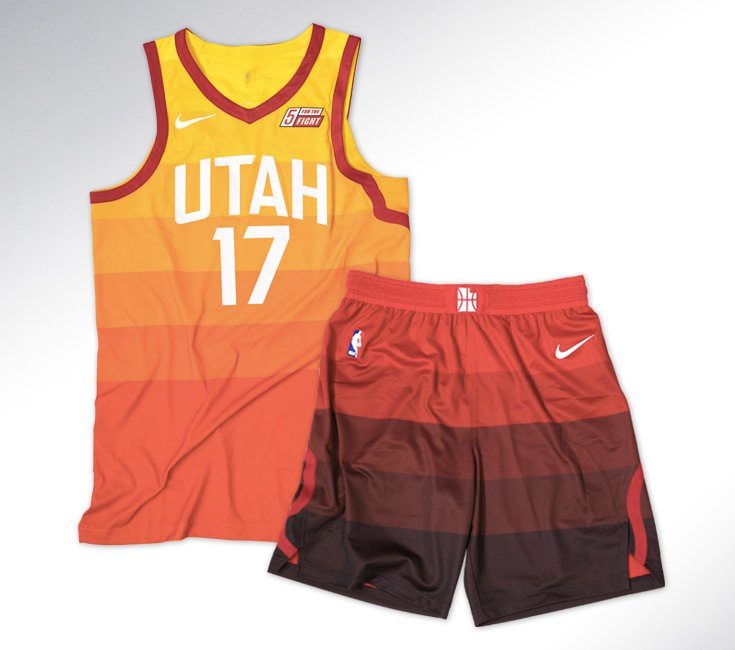
CA: As long as there’s no corporate advertising. Otherwise, if guys are honoring someone and might write in Sharpie, we’ll look at that on a case by case basis. If there are charitable elements, we want to make sure that those charities are real and relevant. That’s really it. As long as you comply with the colors, they have the ability to explore as they see fit.
NDP: You mentioned Hoops For Troops earlier. Are there any theme nights that have a charitable element or cause associated with them?
CA: There’s a decoupling a little bit, between footwear and then up on a player. The footwear is the player choice and whatever deal the player may or may not have with a company. Those companies may or may not fit into the NBA’s larger platform of what we do. Nike has the license for footwear, so as they get up and running, you may see more from them that may tie to Hoops For Troops logos specifically, or what they’re putting on a shirt for MLK or Black History Month. They could also use the Finals Trophy for something if they wanted to.
NDP: Ok great. That all makes sense. Something else I’m curious about is the chain of communication. Lets say there’s a player that’s wearing a shoe with a color, part or material that doesn’t comply. What’s the chain of communication like in terms of how the league notifies the player to switch out during a game?
CA: Well, lets hope that that particular shoe was submitted in advance and we caught it before it went on the court. That’d be first. Second, you’re going to have an equipment manager who might send some communication to our group here and say, “Hey guys, I’m not sure about these colors, or these logos.” When we’re talking about logos, certainly the corporate manufacturer logo is permitted on the shoe, but others may not work. We’ll channel that to our basketball operations group and we’ll have a discussion about whether something is or isn’t complying, based on the evidence we have in front of us, if it’s a protruding part, material or color.
Lets say it gets on the court: A.) We’re watching in real time, and we’re able to communicate that to the equipment manager to ask how that got on court. B.) Every game is reviewed after the fact for all types of compliance. Obviously, in this day of social media, whether it’s SLAM or Nice Kicks or someone else out there saying, “This is what so and so is wearing tonight,” that may raise an antenna for us to get to the equipment manager and say, “Hey, is he just wearing this in pre-game?” In pre-game, you can wear whatever you want. There’s a lot of pre-calculations done to try to prevent that.
During the game, I’m not sure that we’re ever going to stop a game, call a timeout, and make a guy change his shoes. We’re not going to do that, certainly. [laughs] Post game, there may be a warning that is issued. We may want to talk to that player or that manufacturer and ask why they didn’t submit it. I’m sure, just like any business, there are things that fall through the cracks, and you try to identify them and fix them as soon as possible.
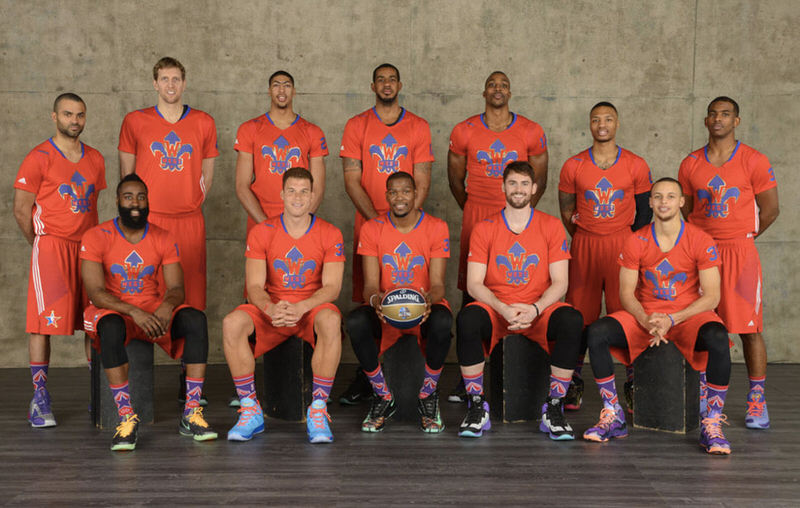
NDP: Are there any specific shoes in the last few seasons where you guys have had to issue a warning, or potentially even a fine?
CA: There was a line of Brand Jordan shoes that Carmelo wore maybe five years ago…
NDP: That was the Melo M10 with the chrome heel, right?
CA: Yeah! On the back. That one was interesting. And listen, there are far more important things in this world and we understand that. [laughs] We don’t want to make this sound like it’s the end of the world. In different shoe types, the back felt reflective. When the chrome was white, it was more subdued. When it was silver, it was more [distracting], and when it was blue, it was less.
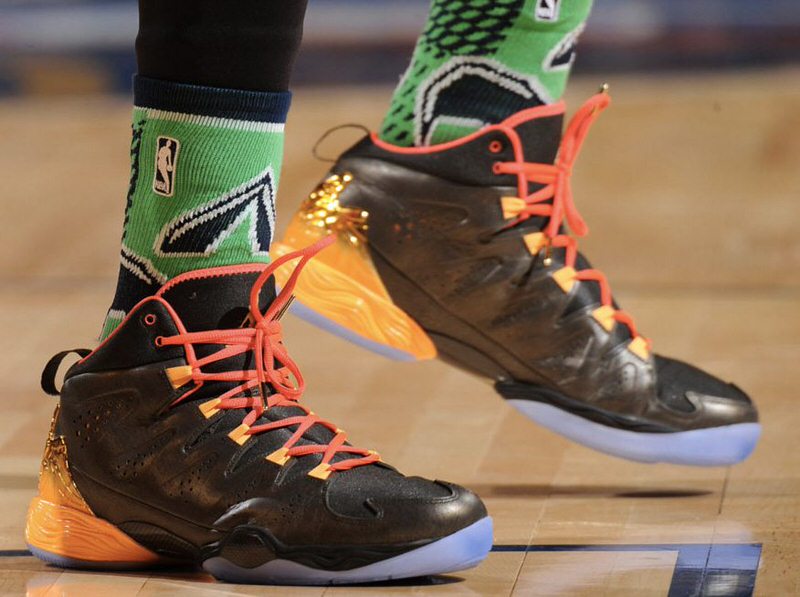
It was almost colorway by colorway, that we’d have to analyze and say “Yes” or “No.” But that was it, and Mike Martinez is the equipment manager for the Knicks that we work with, and so we got with him, Carmelo and the Brand Jordan group and said, “Hey, there are some parameters here, so lets stick with these colors, but not these colors with the chrome.”
NDP: Interesting, and I remember that. They ended up modifying them to be more of a matte finish. Of course, and most historically, when you go back to 1984 you have the classic Air Jordan 1 in black and red that was “banned.” More recently, that’s become a big marketing story for the brand. In talking to people on your team through the years, do you know if he was actually fined for that?
CA: Well, I was thirteen years old. [laughs] So I don’t know for sure. I know there was a letter, and that letter has been used by Brand Jordan. I think it was just a warning. He went on David Letterman and said, “Yeah, they gave us a warning,” or something like that. I think it was just a warning.
NDP: In our world, that’s become a mythical story over time, that Nike paid a $5,000 fine every game for him to wear them, but you can’t find any photos of him actually wearing that shoe in a game. I guess we’ll never truly know.
In terms of the Dress Code, in 2006 we saw a shift to the “Business Casual” guidelines for players entering the arena or at team activities. More recently, we’ve seen guys loosen things up on that too and the arena entrance has really become its own thing that people are really following on social media. Is that something you guys have loosened up as well in how you communicate the guidelines to the players?
CA: We do have parameters around it, and I think the interpretation of the Dress Code at first was “Suits and ties.” It was never that. Wearing certain types of jeans is ok, wearing certain types of sport coats and even certain type of t-shirts are all fine. Our entire society has moved to a more business casual setting in certain workplaces. I have no idea where you are right now, but my guess is you’re not in a sport coat and tie at your office.
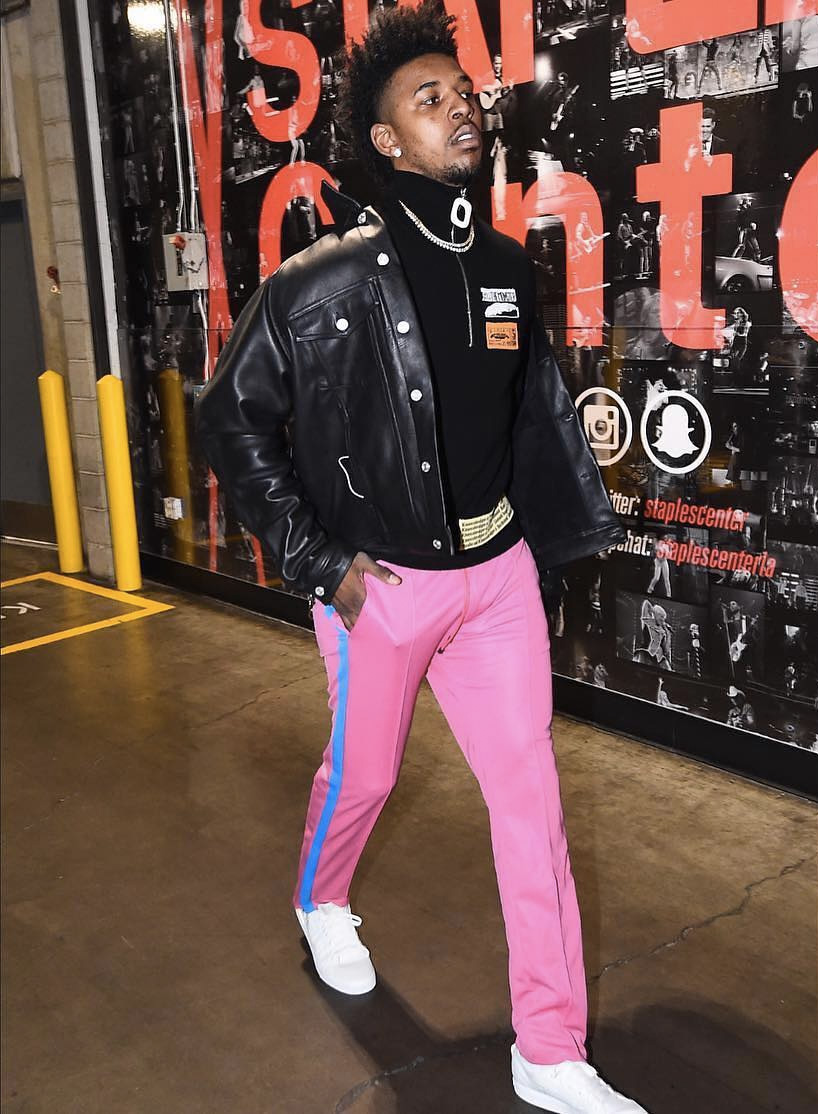
NDP: Not quite – I have sweats on! [laughs]
CA: Exactly. [laughs] That’s shifted a little bit. I can also say that Nike has a full line of travel gear that players have available to them as well. They can dress in more team apparel for planes and road trips. I can’t say that we’ve loosened anything, and we still try to uphold our guidelines, but a lot of it is a mirror image perhaps, in terms of what the new normal is for business casual.
NDP: From a broad sense, as the NBA looks ahead and you have fans in China and throughout Europe that have been rampantly watching the game – the global growth has been great – how do you think the way the league approaches uniforms and colors and allows the players so much expression has really helped to market the league?
CA: There’s a book called Pistol, about Pete Maravich, and it was written by Mark Kriegel. There’s a quote in there from Press Maravich, Pistol Pete’s dad and a legendary coach at LSU. He was an innovator in the game of basketball, and there’s a line in the book where he says he envisioned a world where people would come to see the game for the colors of the uniforms and the depth that they provided as a showpiece. I remember reading that one time, and just thinking, “Wow, that’s it.” You go to the movies to see actors and actresses, the filmography, cinematography and the audio.
Our hope is that the dynamic color of all of our teams, the socks that they wear, the way they coordinate their tights and the shoes that the manufacturers create in all their breadth of design and color, is a part of why you watch and embrace this game. Certainly, it’s the athleticism of the players and the dynamic personalities that they have. If you have the opportunity to go to a building and be apart of a crowd, or watch a broadcast and see the detail of the league, or through social media in seeing behind the scenes of the teams – there are so many levels to how you can embrace this game. As we sit around with Nike, and we just had them in the other day to talk about the future of the game and where we’re going with uniforms. We really believe that fans connect through uniforms.
If you happen to have a kid who’s my kid’s age and they play NBA 2K, they’re going in and picking out their uniforms and they’re jazzed about it. It’s a way for the fan to connect to the game, because maybe they can’t watch the game that night or they can’t get to a game. They might also live in China or another place, and this is their way to connect. Our ability to have the teams manage their brand and keep the uniforms stable, but also innovate with other uniforms and change them out once in awhile, allow players to change their tights in different colors, wear their warmups in different ways, and innovate with their shoes – it’s all this myriad of connectivity to bring fans closer to the game.
We hope on some level that when my kid goes to take the court, maybe he feels like he can be like Kevin Durant, Jayson Tatum or Kyrie Irving, just for a second. Maybe that translates, or maybe it doesn’t, but when he goes home to play the saxophone, he wants to embrace that and be just as good at that as Kyrie Irving is playing basketball. That’s a lofty, lofty goal, but if we can inspire kids to be better than they are and better people than they are because they see how our players act and how a team unifies them, then we win.
